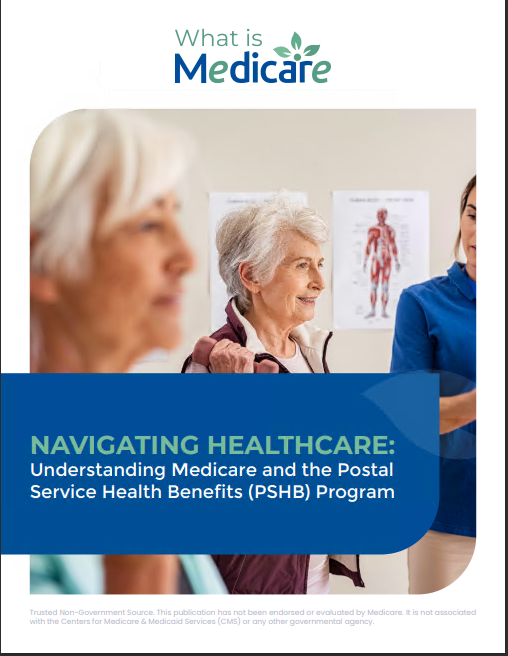Key Takeaways
-
Social Security plays a crucial role in Medicare enrollment, influencing your eligibility and the way premiums are handled.
-
Understanding how Social Security and Medicare interact helps you avoid penalties, delays, or lapses in coverage.
How Social Security and Medicare Work Together
Social Security and Medicare are two key programs that provide financial and healthcare security for retirees. While they serve different purposes, they’re closely linked, particularly when it comes to Medicare enrollment. Social Security not only determines your eligibility for Medicare but also simplifies the enrollment process in many cases.
Determining Your Medicare Eligibility
If you’ve worked for at least ten years (or 40 quarters) and paid Medicare taxes during that time, you’re eligible for Medicare Part A without paying a monthly premium. Social Security keeps track of your work history and uses it to determine your eligibility.
-
Eligibility Age: You become eligible for Medicare at age 65, regardless of when you claim Social Security retirement benefits. However, if you’re already receiving Social Security, you’ll be automatically enrolled in Medicare Parts A and B at age 65.
-
Disability and Medicare: If you’re under 65 and have been receiving Social Security Disability Insurance (SSDI) for at least 24 months, you’ll also qualify for Medicare.
Automatic Enrollment for Social Security Recipients
If you’re receiving Social Security benefits when you turn 65, the automatic enrollment feature kicks in. This means you don’t have to fill out a separate application for Medicare. Here’s how it works:
-
Notification: About three months before your 65th birthday, Social Security will send you a red, white, and blue Medicare card. This card confirms your enrollment in Medicare Part A and Part B.
-
Opting Out of Part B: If you don’t want Part B coverage because you’re still working and have employer-sponsored insurance, you’ll need to follow the instructions provided to decline it. Otherwise, Part B premiums will be automatically deducted from your Social Security payments.
Coordinating Premium Payments Through Social Security
Social Security simplifies Medicare premium payments by deducting them directly from your monthly benefits. This applies to:
-
Part B Premiums: Standard premiums are automatically taken out of your Social Security benefits. If your income is above a certain threshold, you’ll pay an Income-Related Monthly Adjustment Amount (IRMAA), which is also deducted.
-
Part D Premiums: If you have prescription drug coverage under Medicare Part D, the premiums can also be deducted from your Social Security payments, depending on your plan.
Enrolling in Medicare Without Social Security
Not everyone claims Social Security benefits by age 65. If this is your situation, you’ll need to actively enroll in Medicare during your Initial Enrollment Period (IEP). This 7-month period starts three months before the month you turn 65, includes your birthday month, and ends three months after. Missing this window could result in penalties or delayed coverage.
Late Enrollment Penalties
-
Part B Penalty: For each 12-month period you’re eligible but not enrolled, your monthly premium increases by 10%. This penalty is permanent.
-
Part D Penalty: If you go 63 or more consecutive days without creditable prescription drug coverage after your IEP, a penalty applies. This amount is calculated as 1% of the national base premium multiplied by the number of uncovered months.
Special Enrollment Periods (SEPs) for Those Still Working
If you’re still employed and covered by a group health plan, you may qualify for a Special Enrollment Period (SEP). This allows you to delay Medicare enrollment without incurring penalties. The SEP begins when your employment or group health plan coverage ends, whichever comes first, and lasts for eight months. However, if your employer has fewer than 20 employees, Medicare typically becomes the primary payer, so enrolling on time is essential.
Social Security’s Role in Managing Income-Related Adjustments
Higher-income retirees may pay more for Medicare due to IRMAA. Social Security calculates these adjustments based on your tax returns from two years prior. If your income has significantly decreased due to a qualifying life event, you can request a reassessment by filing Form SSA-44.
Qualifying Life Events Include:
-
Marriage, divorce, or death of a spouse
-
Reduced work hours or retirement
-
Loss of income-producing property
-
Employer settlement payments
The Medicare Part A Premium for Those Without Enough Work Credits
If you don’t meet the work requirements for premium-free Part A, you can still buy it. Social Security determines the monthly premium based on the number of quarters you’ve worked. In 2025, the premium is $518 per month if you have fewer than 30 quarters and $284 per month for 30-39 quarters.
Timing Is Everything: Avoiding Gaps in Coverage
Social Security and Medicare enrollment timelines are interconnected, so planning ahead is key to avoiding coverage gaps. If you’re not automatically enrolled, make sure to sign up during your IEP or SEP to ensure continuous coverage.
General Enrollment Period (GEP)
If you miss your IEP or SEP, the GEP runs from January 1 to March 31 each year. Enrolling during this time means your coverage starts on July 1, but you may face penalties for late enrollment.
Social Security Disability and Medicare
For those under 65, Social Security Disability Insurance (SSDI) provides a pathway to Medicare. After 24 months of SSDI payments, you’re automatically enrolled in Medicare Parts A and B. Individuals with specific conditions, like end-stage renal disease (ESRD) or amyotrophic lateral sclerosis (ALS), qualify for expedited enrollment.
Financial Assistance Options
If Medicare premiums and out-of-pocket costs are burdensome, Social Security administers programs that offer financial relief:
-
Extra Help for Part D: This program reduces prescription drug costs, including premiums, deductibles, and copayments.
-
Medicare Savings Programs (MSPs): These state-run programs help pay Medicare premiums and, in some cases, deductibles and coinsurance.
What Happens When You Delay Social Security Benefits?
Some retirees delay claiming Social Security benefits to maximize their monthly payments. While this strategy can pay off financially, it also impacts Medicare enrollment. Here’s how:
-
Manual Enrollment Required: You’ll need to actively sign up for Medicare during your IEP, as automatic enrollment won’t occur.
-
Premium Payments: Without Social Security benefits to deduct premiums from, you’ll receive a bill called a Medicare Easy Pay or Quarterly Bill.
Planning for Changes in Income
Life events and income fluctuations can affect both Social Security and Medicare costs. To stay ahead:
-
Review your Social Security statement regularly to confirm your work history and earnings.
-
Monitor your Modified Adjusted Gross Income (MAGI), as this affects IRMAA surcharges.
-
Notify Social Security immediately if you experience a qualifying life event that impacts your income.
Why Understanding the Social Security-Medicare Connection Matters
By understanding the interaction between Social Security and Medicare, you’re better equipped to make informed decisions about your healthcare and finances. Whether it’s avoiding late penalties, ensuring seamless premium payments, or qualifying for financial assistance, planning is essential. Don’t leave these crucial steps to chance—they’re the foundation for a secure retirement.





